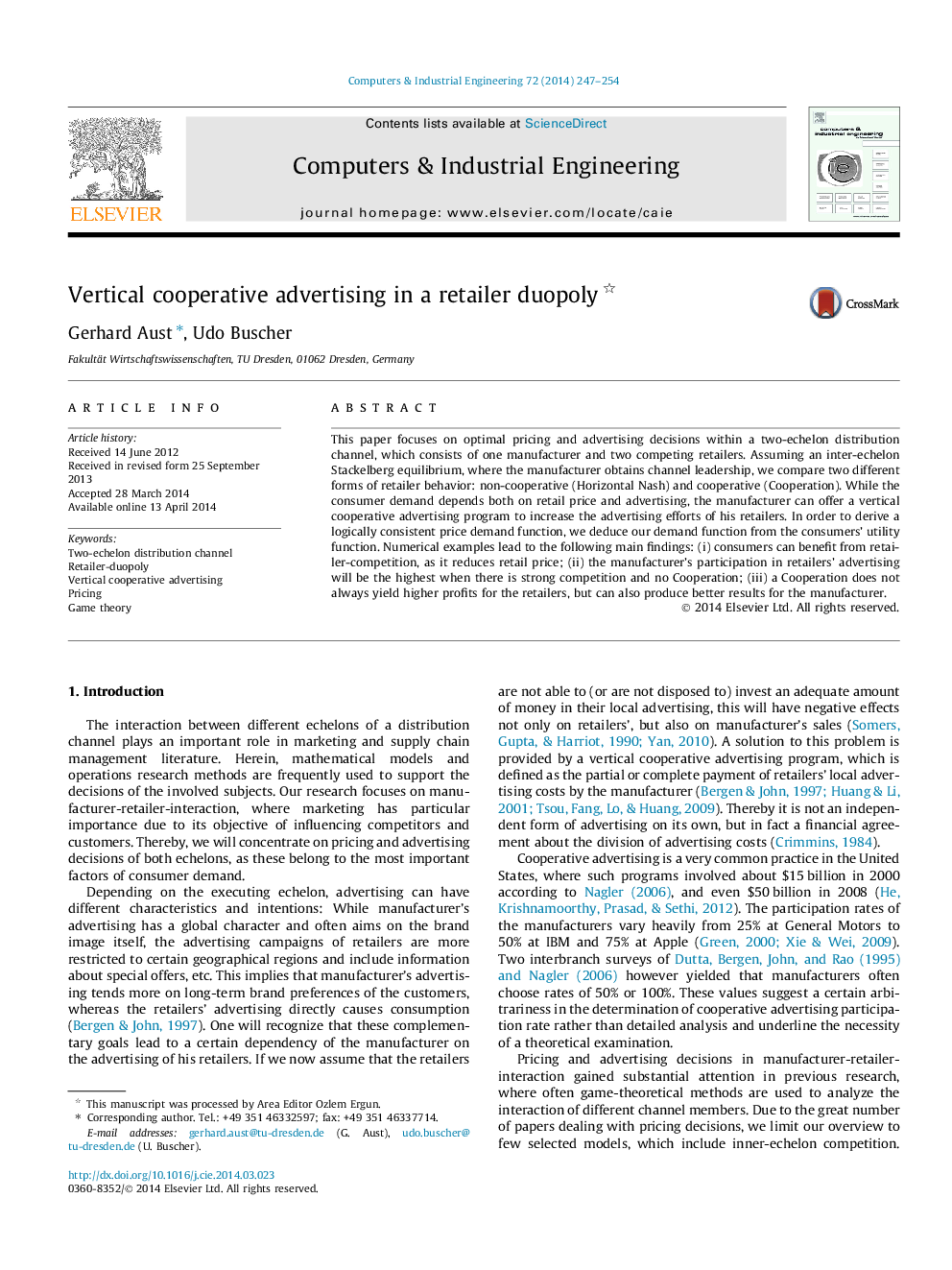| Article ID | Journal | Published Year | Pages | File Type |
|---|---|---|---|---|
| 1134207 | Computers & Industrial Engineering | 2014 | 8 Pages |
•We model cooperative advertising in a one-manufacturer two-retailer channel.•Consumer-demand is sensitive to retail price and advertising expenditures.•We apply a logically consistent price demand function based on consumer-utility.•Consumers can benefit from retailer-competition by lower prices.•A collusion is not always favorable for the retailer-duopoly.
This paper focuses on optimal pricing and advertising decisions within a two-echelon distribution channel, which consists of one manufacturer and two competing retailers. Assuming an inter-echelon Stackelberg equilibrium, where the manufacturer obtains channel leadership, we compare two different forms of retailer behavior: non-cooperative (Horizontal Nash) and cooperative (Cooperation). While the consumer demand depends both on retail price and advertising, the manufacturer can offer a vertical cooperative advertising program to increase the advertising efforts of his retailers. In order to derive a logically consistent price demand function, we deduce our demand function from the consumers’ utility function. Numerical examples lead to the following main findings: (i) consumers can benefit from retailer-competition, as it reduces retail price; (ii) the manufacturer’s participation in retailers’ advertising will be the highest when there is strong competition and no Cooperation; (iii) a Cooperation does not always yield higher profits for the retailers, but can also produce better results for the manufacturer.
